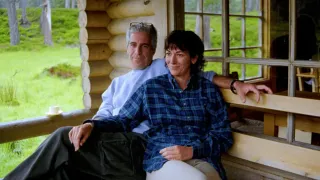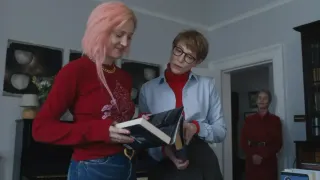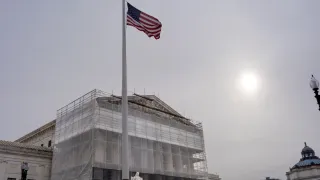August 18, 2022
Queering Cinema: The Conflicted Talent of Vincente Minnelli
Robert Nesti READ TIME: 7 MIN.
As a teenager, I came across "The Bad and the Beautiful" on television. From the moment it began with its flashy Hollywood-style credits showcasing its all-star cast accompanied by David Raskin's sweeping music, I was hooked. So was the late Stephen Sondheim, who told Raskin in an interview that "it was the finest melody ever composed for a film."
But what attracted me to this insider Hollywood story about a charming, manipulative operator who climbs his way to the top, using and abusing his friends and associates along the way? Could it have been my queer genes responding to director Vincente Minnelli's queer sensibility? Was, say, that tracking shot of a chic Hollywood party that so cleverly satirized and celebrated it spoke to me that there was a gay sensibility behind the film?
Minnelli would deserve an entry in this series if only for having married Judy Garland and, with her, fathered Liza Minnelli, but he was a far more important and curious talent in queer Hollywood history, and one filled with contradictions.
Before he went to Hollywood and settled in for a 30+-year career (mostly as an MGM contract player), Minnelli was the toast of Broadway as a designer and director. Throughout the 1930s he also lived pretty much as an openly gay man who endured the barbs by Dorothy Parker about his wearing makeup and dating a man with the same name. Born Lester Minnelli, he was said to have dated Lester Gaba, a sculptor and designer, who also wore makeup. Minnelli discovered his "dandy" persona after reading a biography of the flamboyant, 19th-century artist James Abbott McNeill Whistler. After his quick success as a set designer, he was soon also directing major musicals and became part of the smart set of New York celebrities – George and Ira Gershwin, the previously mentioned Parker, Lillian Hellman, E.Y. Harburg, Moss Hart, and Oscar Levant, who would go on to appear in a number of Minnelli's films.
But once in Hollywood, Minnelli disappeared into the closet. He was told by the studio to stop wearing makeup on the set and began to pursue relationships with women. At the age of 21, Garland was reluctant to star in "Meet Me in St. Louis," the Technicolor musical that Freed was rushing into production because she didn't want to play another teenager. This put her in an adversarial relationship with Minnelli who found her dismissive attitude worked against the story's wholesome authenticity. But he coaxed her with the role of Esther Smith and Garland gave her second great performance (after "The Wizard of Oz") in a hugely successful film. The trust she developed with Minnelli led to their marriage and the mistaken belief on Garland's part that he would protect her against the studio. But, she discovered, Minnelli was married to his career. "I was employed by the studio and Judy was now against the studio," Minnelli said at the time. Her drug use intensified and in 1947, she was hospitalized for nervous exhaustion. By 1949, the marriage was over. (Minnelli would go on to marry three more times and have a second child.)
But it was one that was viewed with curiosity at MGM. When Garland was pregnant, the scuttlebutt at the studio was that it was an immaculate conception. During the marriage, Minnelli kept his gay life on the down-low, though Garland was said to have caught him with their gardener, which was said to have led to a suicide attempt on her part. She also accused Minnelli of having an affair (unproven) with her co-star Gene Kelly while filming "The Pirate," claiming he was spending more attention on Kelly than her.
Minnelli biographer Mark Griffin, told Queerty: "It was generally assumed that he was a closeted gay man who, due to the societal conditioning of his era, felt compelled to marry and procreate. I was surprised to discover that the people I spoke to about all of this often provided dramatically conflicting anecdotes or opinions. It seems clear to me that on several levels, Minnelli was living in two different worlds."
But was Minnelli being gay an influence on his films? Emmanuel Levy, another biographer, felt so, saying in an interview with The Advocate, Minnelli "channeled his homosexuality or his sexual phobias and tensions and anxieties directly into his work. You can read his movies for their sexual politics..."
While he doesn't believe in a "queer sensibility," Levy concedes directors like Minnelli (and Cukor, Gus Van Sant and Todd Haynes) "imbue their work with a gay/queer sensibility regardless of the particular genre or narrative they work in." In Minnelli's case, it is the style, not the substance, of his films that shows his queer sensibility. His only film that touched overtly on queer subjects is "Tea and Sympathy," a 1956 adaptation of the Robert Anderson hit 1953 play, about a young man's gay panic at a boarding school. But in a wide variety of films in numerous genres, Minnelli brought his queerness to the forefront through his use of color, design, and iconography. Is there not a more recognizable Minnelli image than the coiffed, sophisticated women that adorn his films if only on the margins?
Minnelli's sophisticated sheen is a hallmark of his films, as is his bold use of color and a mobile camera. That he was equally at home in musicals and melodramas points to how the excesses of these genres appealed to his sensibilities. He reveled in them, be they the fantastic ballet he devised with Gene Kelly to climax "An American in Paris" or the bravura sequence in "The Bad and the Beautiful" when Lana Turner confronts Kirk Douglas and has a breakdown while driving her car in a rainstorm. Or the wonderfully stylized "Girl Hunt Ballet" (from "The Band Wagon"), a campy send-up of a Mickey Spillane private eye story.
But Minnelli wasn't about excess – his best work never went overboard, and instead smoothly and confidently brought elegance and style to whatever genre he worked in. Being a good studio employee, he often worked on what was assigned to him: domestic comedies ("Father of the Bride"), comedy vehicles ("The Long, Long Trailer" for Lucille Ball and Desi Arnez), musical fantasies ("The Pirate"), steamy dramas ("Some Came Running"), romantic comedies ("Designing Woman"), and biographical dramas ("Lust for Life"). But even when pigeon-holed into projects, Minnelli would infuse the films with his sure bold sense of design, color and sophistication.
In all likelihood, the queer aesthetic Minnelli displays in his films wasn't conscious on his part. Rather, something inherent to his being. As David Gerstner wrote in an essay on Minnelli, "It is the brilliance (and tension) of this social and creative excess (New York in the 1930s) that Minnelli saw and experienced which informed the visual extravagance that he brought to the stage and screen."
Minnelli, Gerstner added, "as the twentieth-century American dandy, sought refuge from the vulgarities of this over-masculine world by using his affinity for art–a queer modernist art–in order to ironize, to situate within and against, and to confuse masculinist cultural demands. If he was to be constantly suspect, Minnelli placed himself in a world where he would feel comfortable exercising his creative talents. From Chicago to New York to Hollywood Minnelli surely 'aped but did not resemble.' More to the point, whether declared or not, Minnelli participated in and visibly presented a queer modernist aesthetic."






